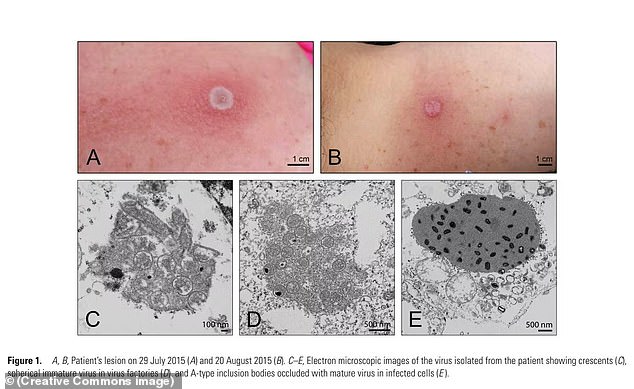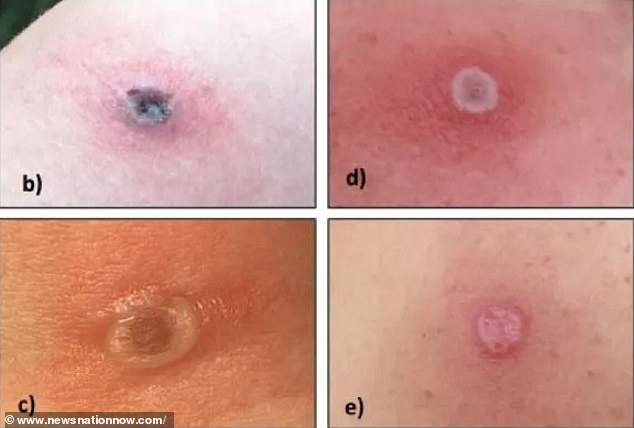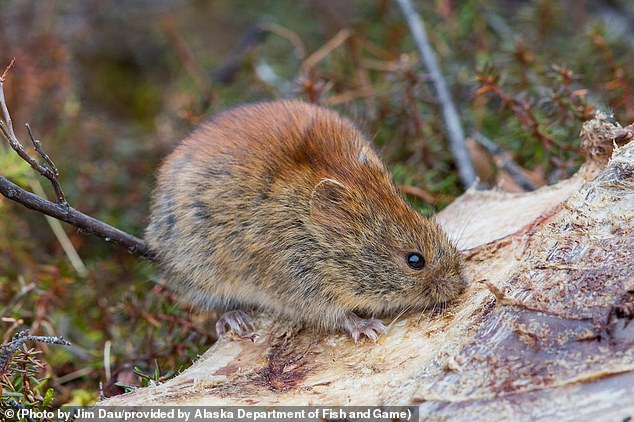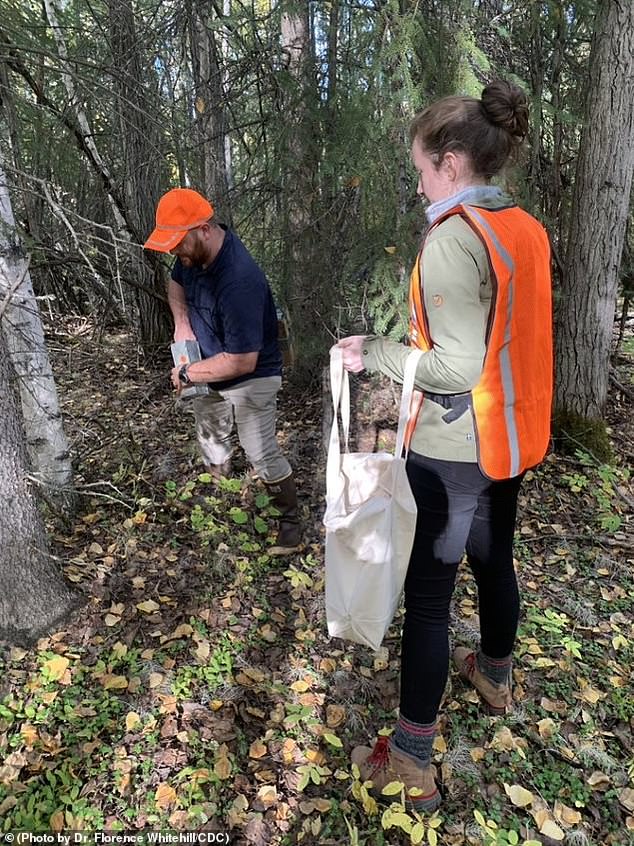Elderly man dies from mysterious and rare ‘Alaskapox’ while living on his own in remote woodlands
An elderly man who lived alone in rural Alaska has become the first victim of ‘Alaskapox’ – a rare disease discovered only nine years ago.
The unidentified, immunocompromised man died in late January, weeks after becoming the seventh person to ever contract the virus while living on the Kenai Peninsula.
As of Sunday, it remains unclear how he contracted the disease, although the fact that he did confirms that the disease has spread beyond local wildlife populations and into local communities.
Already a cancer patient, the man first reported signs of infection in September, citing a tender lesion that appeared near his armpit. The infection worsened and after six weeks of emergency visits from government officials, he was hospitalized locally.
As the situation continued to evolve, officials said he was transferred to a hospital in Anchorage, where staffers were able to identify the infection but were unable to save him.
An elderly man who lived alone in rural Alaska has become the first victim of ‘Alaskapox’ – a rare disease discovered only nine years ago. Pictured: An Alaskapox lesion about 10 days after the onset of symptoms

The unidentified, immunocompromised man died in late January, officials said in a bulletin Friday — weeks after he became the seventh person ever to contract the virus. Illustrations from an article entitled ‘Novel Orthopoxvirus Infection in an Alaska Resident’
He would die in late January, according to the state health department’s epidemiology section bulletin, before telling the patient’s sad story.
“In mid-September 2023, an elderly man from the Kenai Peninsula with a history of drug-induced immunosuppression due to cancer treatment noticed a tender red papule in his right armpit,” doctors employed by the state sect wrote.
‘Over the next six weeks, he presented several times to his primary care provider and the local emergency department (ED) for clinical evaluation of the lesion and was prescribed multiple courses of antibiotics.
“A punch biopsy revealed no evidence of malignancy or bacterial infection,” the report continued.
‘Despite antibiotic therapy, the patient experienced fatigue and increasing hardness and pain in the right axilla and shoulder.’
Then, on Nov. 17, medical professionals wrote, the unnamed man was hospitalized “due to extensive progression of suspected infectious cellulitis” that was interfering with the use of his right arm.
This led to his transfer to the hospital in Anchorage, officials said – where, even with treatment, the man suffered from kidney failure, breathing problems, malnutrition and a litany of other problems, the bulletin said.

The victim “lived alone in a wooded area (on the Kenai Peninsula) and reported no recent travel and no close contacts with recent travel,” the doctor wrote of the patient’s infection and subsequent death
An extensive battery of tests was carried out to determine the cause of the patient’s infection, including ‘a plasma microbial cell-free DNA sequencing test’ that can identify and quantify molecules for more than 1,500 species of bacteria, viruses, fungi and parasites .
The test initially came back positive for cowpox virus on Dec. 8, the authors wrote — before a lesion swab sent to the Alaska State Public Health Laboratory for subsequent testing ruled out cowpox, monkeypox and smallpox.
However, the test did not rule out Alaskapox (AKPV) as a possible cause – and additional testing from the Centers for Disease Control subsequently confirmed that the virus was the same genus as smallpox and monkeypox.
The man, meanwhile, continued to complain to doctors of a “neuropathic burning pain” that radiated from his legion to his entire body, before intravenous treatment intended to combat the infection.
About a week after this treatment, doctors wrote how the patient’s condition began to improve. However, ‘despite intensive medical support in a long-term care setting, the patient later presented with delayed wound healing, malnutrition, acute renal failure, and respiratory failure.
A combination of these illnesses contributed to his death in late January 2024, doctors wrote — making him the seventh in Alaska to be sickened by the virus and the first ever to die.
All the other victims became ill in a town in Alaska, 600 kilometers north of the forest where the victim lived alone, called Fairbanks North Star Borough, but they all survived.

This undated photo shows a northern vole. Small mammals, especially northern red-backed mice, have been found to be infected with Alaskapox, a disease linked to monkeypox and smallpox that first emerged in 2015. Six mild cases have occurred since then.

This was not the case for the Kenai Peninsula man, who doctors wrote “lived alone in a wooded area and reported no recent travel and no close contacts with recent travel,” before ultimately dying late last month from malnutrition and kidney and respiratory problems.

Katherine Newell, a CDC Epidemic Intelligence Service officer assigned to the Alaska Department of Health, is working with a colleague in the Fairbanks area — the only other region where the virus has been detected — to collect small mammals that may have harbored the virus carry with him. The trapping campaign, carried out in September 2021, found around three dozen small animals showing signs of previous infection or carrying the virus themselves. Most were red-backed voles
The first was affected in 2015 and two more cases were identified in the summer of 2021. Four other non-fatal cases have emerged in the period since, all of which were mild and did not require hospitalization.
This was not the case for the man from the Kenai Peninsula, whom the doctors wrote ‘lived alone in a wooded area and reported no recent travel and no close contacts with recent travel.”
He did report caring for a stray cat at his home that regularly hunted small mammals and often scratched him, doctors wrote — citing a noticeable scratch near his right shoulder in the month before the rash appeared.
This fact is just as important because, apart from humans, the virus has only been found in small mammals, such as voles and shrews.
The patient reported no other recent contact with small mammals, but did report gardening in his backyard through September 2023, doctors wrote — pointing to the cat as one of the few possible points of infection.
Serum and mucosal swabs collected from the stray cat were sent to CDC for testing for antibodies and orthopoxvirus, although all tests were negative.
Doctors puzzled by the source of infection wrote: ‘The route of exposure in this case remains unclear, although scratches from the stray cat represent a possible source of inoculation through fomite transmission.’
They added that Alaska State Epidemiology is “working with the University of Alaska Museum and the CDC to test small mammals for AKPV” in and around the region.
Their efforts will continue from Sunday.
